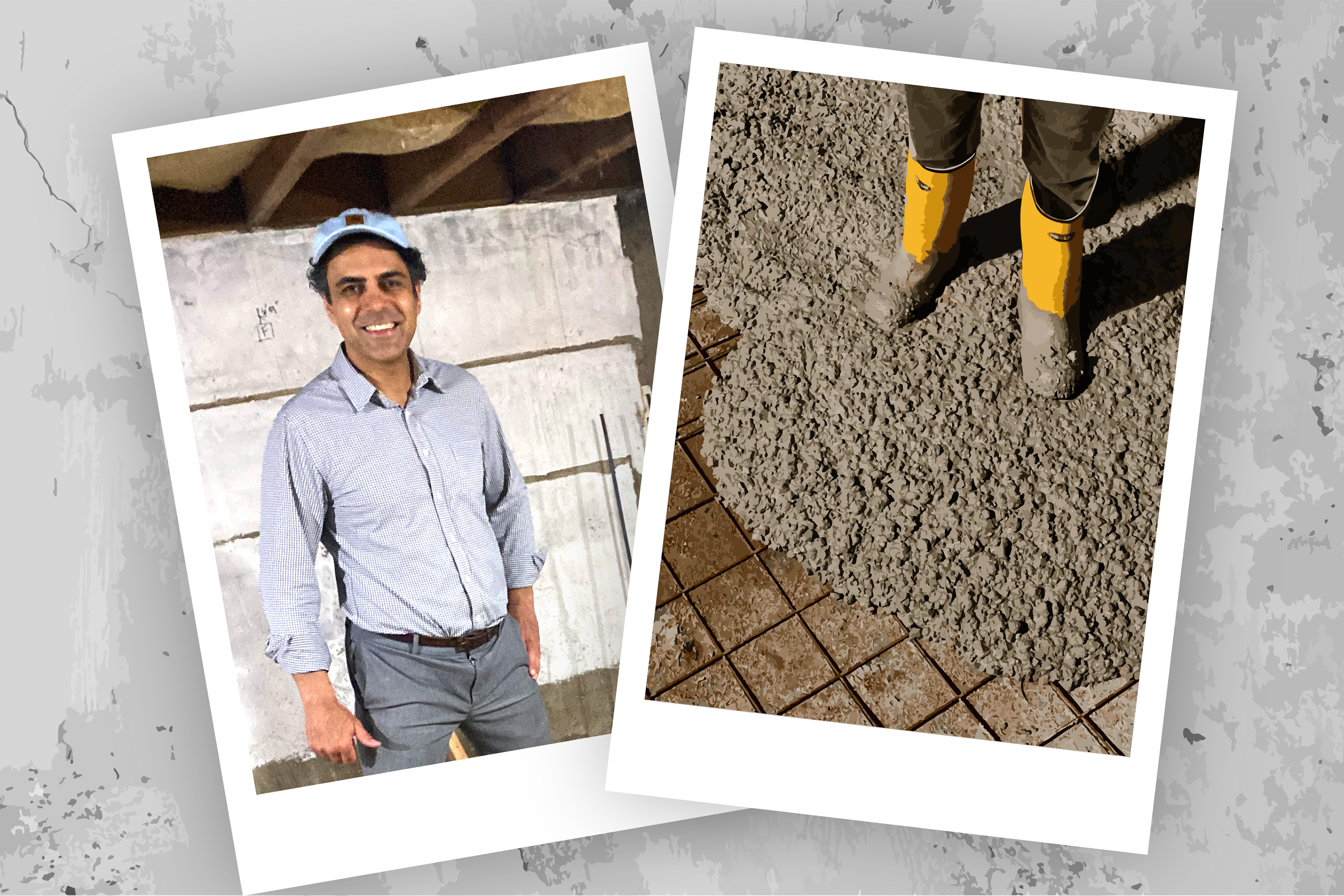Cement-free Concrete Startup Paves Path to Low-Carbon Construction
-
-
Slice of MIT
Filed Under
Recommended

In the world of greenhouse gas emissions, concrete is a heavy hitter—generating roughly seven percent of total CO2 emissions globally. Now C-Crete Technologies, a startup founded by MIT alumnus Rouzbeh Savary PhD ’11, has demonstrated a new way to make concrete with almost zero CO2 emissions. “It’s a major milestone for the entire construction industry,” Savary says.
C-Crete’s innovation focuses on cement, which is not the same thing as concrete, even though the words are often used interchangeably. Technically, cement is the “glue” that binds materials such as sand and gravel together to make concrete. Worldwide, roughly 4 billion metric tons of cement are produced each year in an extremely energy-intensive process that feeds a huge and growing hunger for concrete structures of all kinds.
“Concrete is the most widely used material on the planet after water,” Savary says. “And I joke that water gets a boost because it’s used in concrete.”
Concrete is the most widely used material on the planet after water. And I joke that water gets a boost because it’s used in concrete.
C-Crete has developed a drop-in replacement for Portland cement (the industry standard) made up of a suite of natural minerals and industrial byproducts. Since the new material is produced without heat, using the substitute eliminates approximately one ton of CO2 emissions for each ton of cement it replaces. The new material, which exceeds the strength standards set by the American Society for Testing and Materials, debuted this summer, when the company poured roughly 60 tons of concrete for the foundations and walls of a commercial building in Seattle. “This is the first actual building in the US that has cement-free structural concrete,” Savary says.
Raised in Iran, Savary developed an early interest in concrete by working with his father, a building developer. Later, he earned his bachelor’s degree in civil engineering from Iran’s Sharif University of Technology and then went to McGill University in Canada for his master’s. At MIT, he focused his PhD research in civil engineering on the chemistry of Portland cement—hoping to unlock the secrets of the material and reverse engineer it to develop a better binder.
Before MIT, Savary wasn’t sure how to start his own company. Then, inspired by the entrepreneurial ecosystem of the Institute—which has launched such successful companies as Bose and Akamai—he came to believe he too could start a business. “MIT gave me that confidence.” In 2010, while still on campus, Savary formed C-Crete, entered MIT’s $100K Entrepreneurship Competition, and took home first prize.
Still, Savary’s path since MIT has not been entirely smooth. Although his PhD research laid the groundwork for the company’s revolutionary new material, he found it challenging to develop a product that could compete with century-old Portland cement in terms of both cost and scalability. “Over 10 years after MIT, I was constantly working on these two challenges,” he says. “There were many, many failures over the years.”
In the meantime, Savary joined the faculty at Rice University, where he served as an assistant professor in the Department of Civil and Environmental Engineering and in the Department of Materials Science and NanoEngineering from 2011 to 2019. Then, he was finally able commit himself full time to C-Crete, which now has a manufacturing base in the Bay Area of California.
Savary says he always wanted to “make a big wave” and leave a legacy in the world, and he now believes his company is going to fulfill his dream by opening up a new era of sustainable construction. He traces that success back to his time at the Institute—but not because of his PhD research. “The biggest lesson was not what I learned about concrete, but the fact that everything is possible when passion, grit, and determination collide,” he says. “I appreciate MIT for the opportunity to dream big and execute big.”
Photo illustration by Gretchen Neff Lambert; photos courtesy of Rouzbeh Savary.







